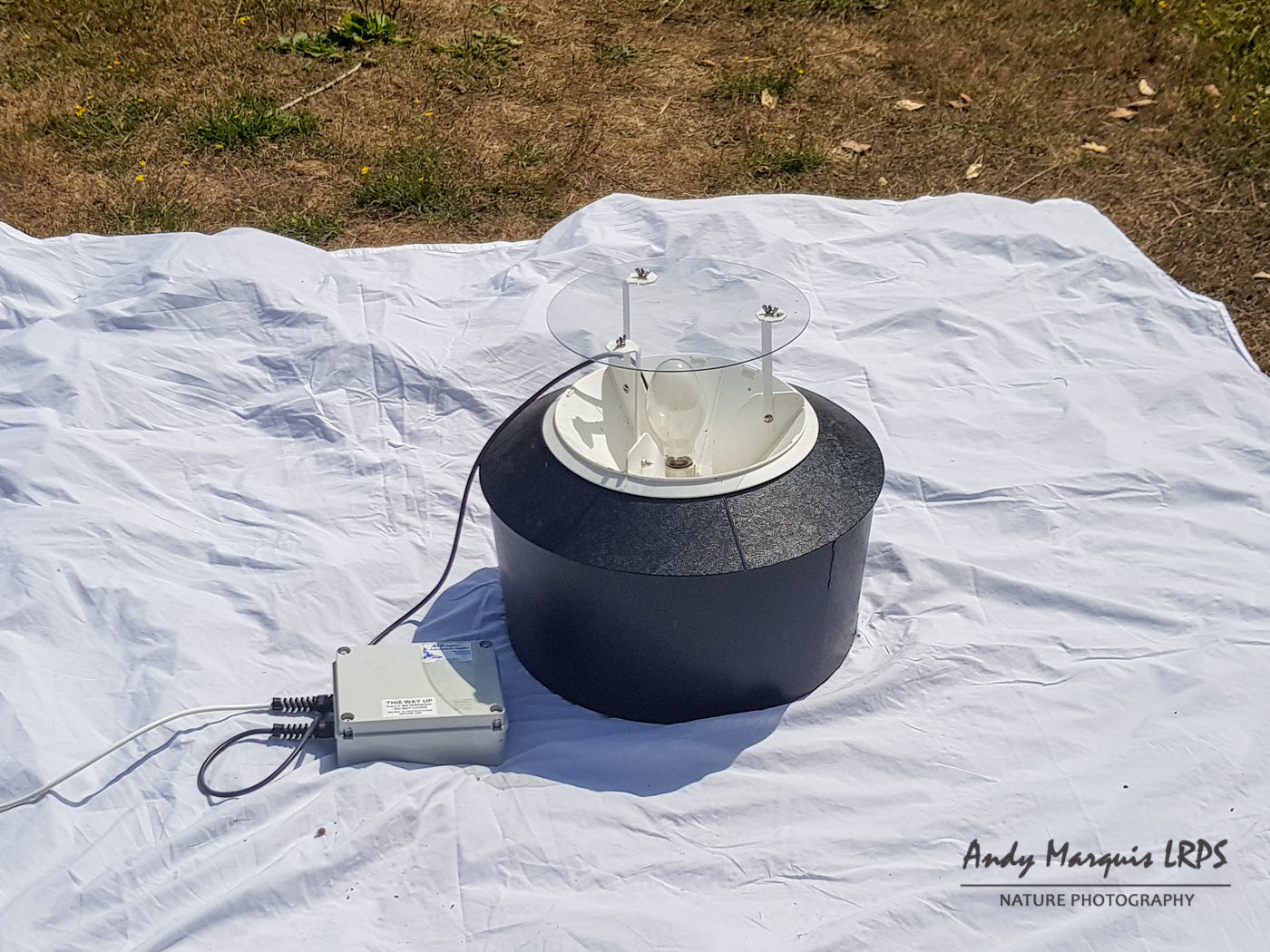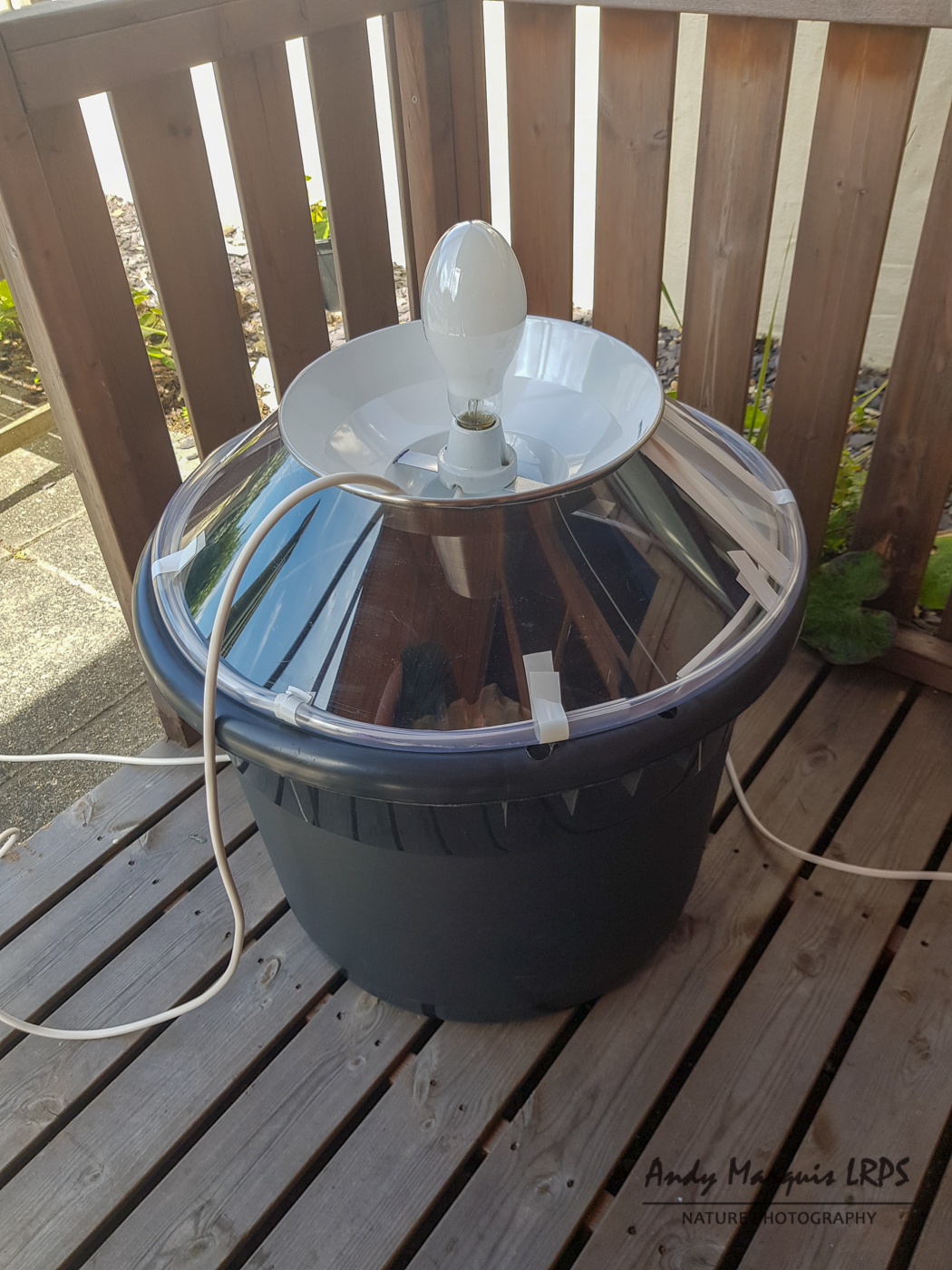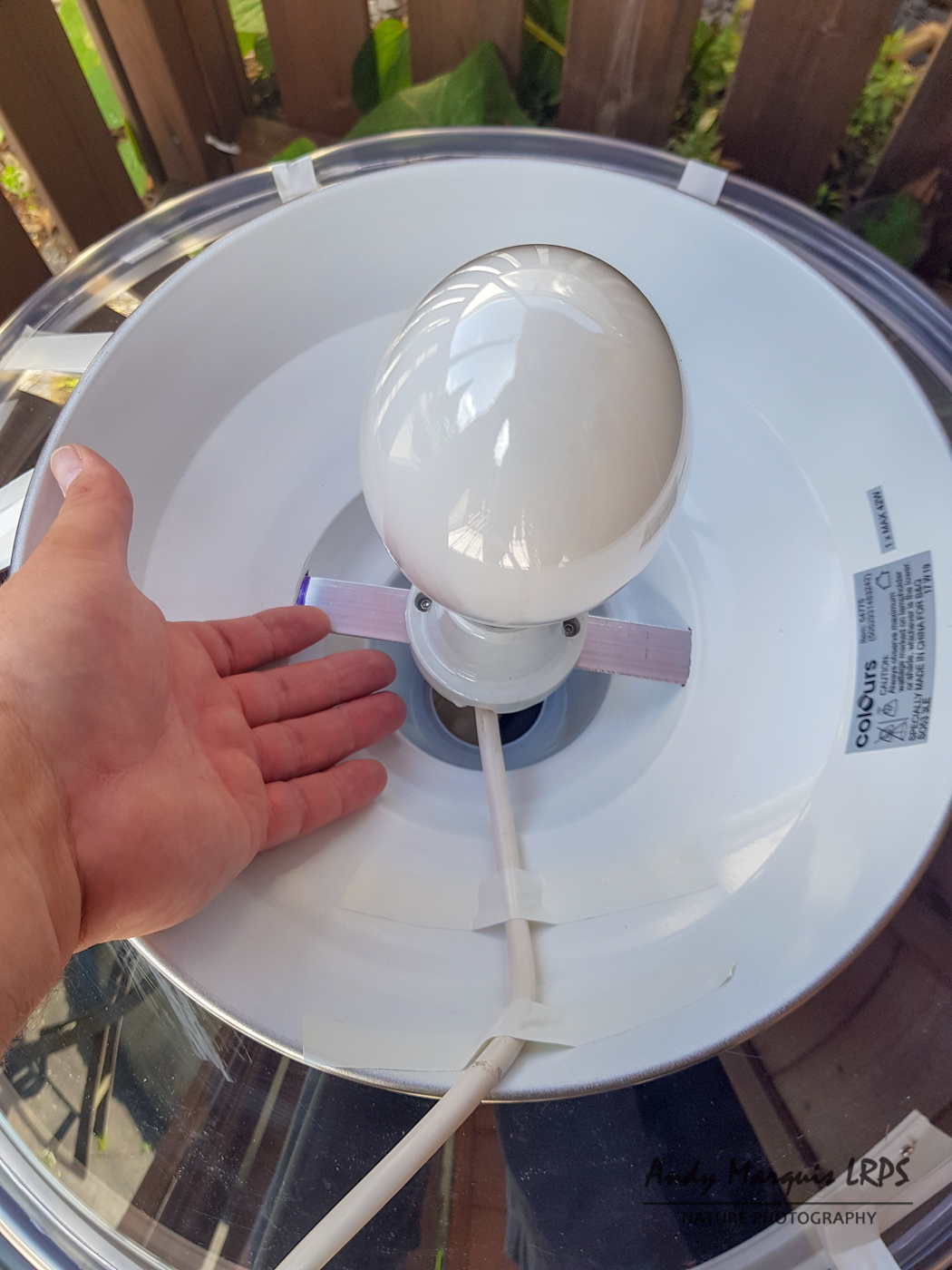Moth Trapping by Andy
Marquis
I have now been trapping moths for several years and as part of the work with the Pollinator Project and following various open events for La Societe Guernesiaise with the Entomology section have put together a simple guide to moth trapping.
See my moth photo
pages for some photo's of the moths I have caught and released.
There are also a lot more photo's on my FaceBook page.
Moth trapping can be as simple or complex as you want it to be and pretty much as cheap or expensive as you want to make it. I will include some information on how to make your own moth traps from the very simple to the more complex. You can of course just purchase a moth trap from an entomological supplier (I will list some websites later), but it's much cheaper to build something yourself and experiment along the way.
Why would you want to trap moths?
- To See them! You won't get to see many moths in daylight, nearly all moths are nocturnal and even at night it's a challenge to see them up close, trapping them will allow you to enjoy the beauty and variety available where you live (or trap).
- To record them. Moths tell us a lot about the habitat in the area you live. Whilst many moths will travel long distance, a lot of species rely on particular foodplants and will keep close to areas of that plant so that they can lay their eggs.
- Recording moths will allow us to identify vulnerable species, raise awareness and protect their habitat
- Recording will tell us
if a species is found to be in decline, and may help to identify
the reasons for that decline, giving an opportunity to set an
action plan in progress to help reverse it.
- To help raise awareness of the importance of moths, expecially as a pollinator.
Methods
- Sugaring - Create a concoction of sugar and wine, soak an old rope in the solution and hang it up or paint on an old fencepost. Moths will come at night for the sweet sickly smell.
- Light Trapping - See below for more information on the most common method.
- Pheromone Traps -
Phoromone lures are available from a few places online and mimic
the smell of a female moth to draw males, the most well known being
the Emperor Moth.
Light Traps
- Sheets
- Skinner Trap
- Robinson Trap
Bulbs
- Mercury Vapour (MV) - now becoming harder to get due to European regulations. These run very hot and will explode if rain hits them whilst lit. You can see the use of a rain guard in one of the pictures of a Robinson trap below.
- Actinic - The new standard for moth trapping, Available as tubes and "normal" lightbulbs.
- Black Light Ultra-violet - The type used in clubs and parties which makes anything white glow brightly.
- Wemlite - These bulbs are often used in bug zapper type traps, they are available without the killing zapper part and work well to attract moths.
Other Equipment
- A simple moth guide like "The Concise Guide to the Moths of Great Britain and Ireland" by Townsend & Waring or "British Moths - Second Edition" by Chris Manley
- Some sample pots or bug pots - to keep the moths in whilst you identify them!
- A hand lens if you want a closer look
- A camera which has a macro function to photograph any catches
Links
Sheets
There are several options when it comes to light traps from making a very simple one to buying a top of the range Robinson trap. The easiest method to get you going is to use a white sheet stretched out (or a white wall of your house), with a suitable bulb projected onto it. You will find that in some areas leaving the bathroom window open with the light on inside and window wide open can make a great moth trap, but doesn't always go down well with the family...
In these photographs I have showed how I make use of a sheet. The first photo a bulb on a fishing tripod on a white sheet, a great method in the field.
The second picture shows how I sometimes use a white sheet when trapping in the garden, the light reflects off of the sheet helping to draw moths in.
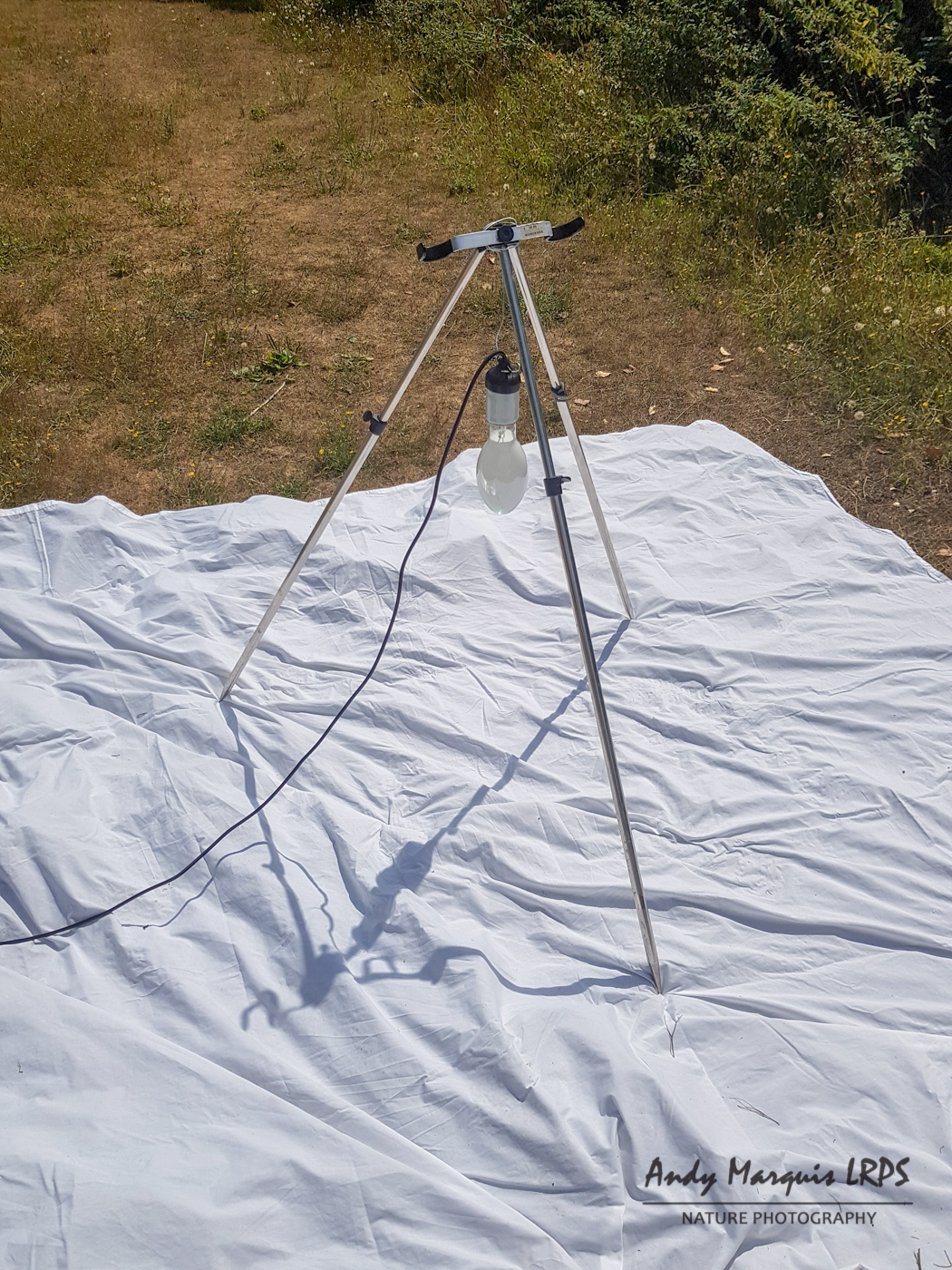
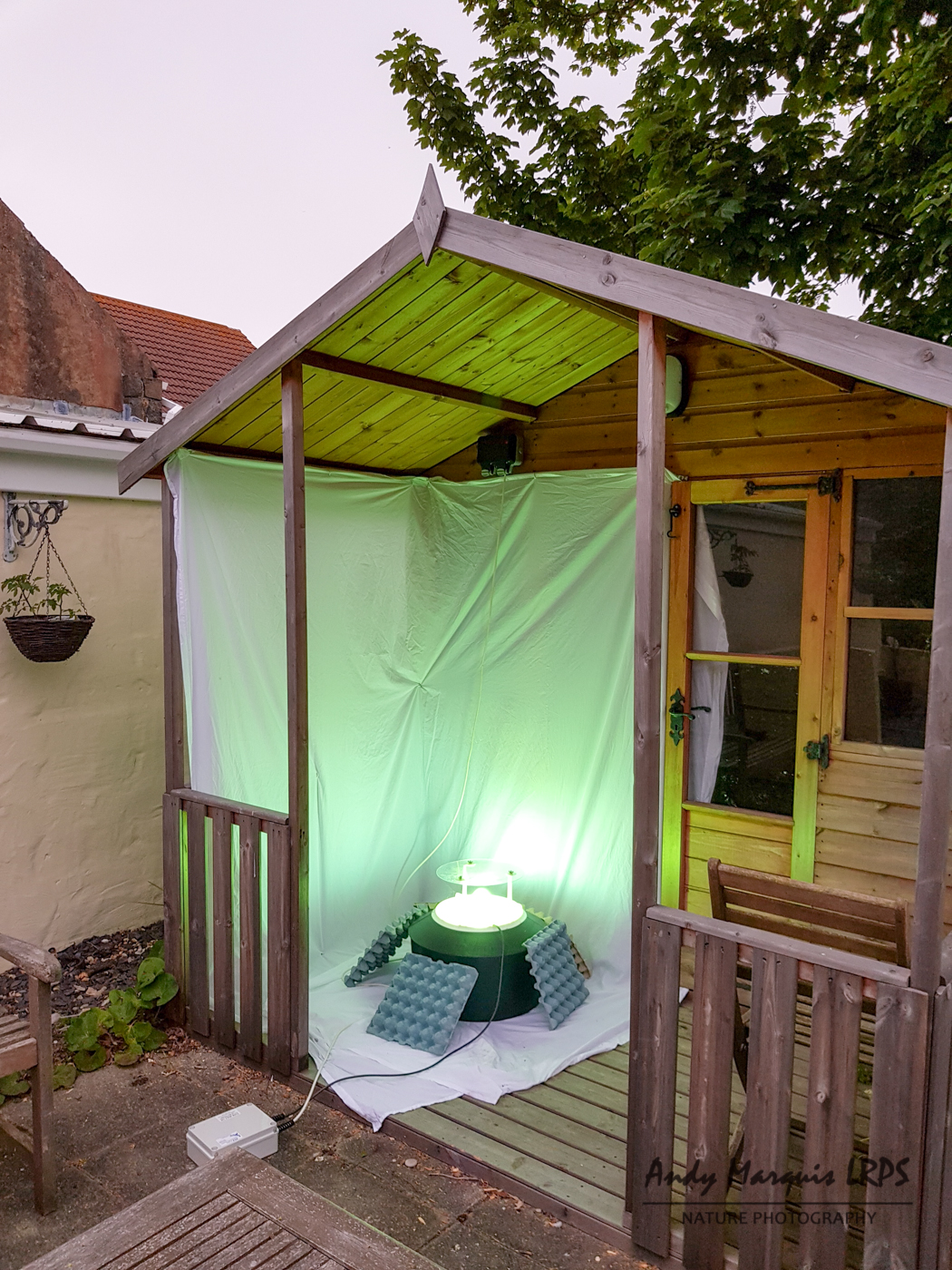
The sheet or wall method requires some attention rather than just turning it on and leaving it, moths will come to rest on the lighted sheet or wall but will be free to fly off, which they all tend to do at first light or if there is any rain or drizzle. It is therefore best to have a few sample pots at the ready and pop any moths in them as they arrive, this means a fairly constant vigil or checking every half an hour. A butterfly net will come in handy for this!
Skinner Trap
A Skinner trap is more or less a modified box with perspex sheets set at an angle on top which forces moths to drop into the box and then not be able to escape (some do manage though!). An easy trap to build yourself with some outdoor grade / treated wood or even strong white plastic sheeting. You don't want the trap to fall apart the first time it gets wet (either heavy dew or an unexpected shower).
These
photo's are of a commercially produced trap from Anglian
Lepidopterist Supplies online site with twin 30w Actinic
tubes.


Commercially available traps are available with either an MV bulb or an Actinic strip bulb. You can sustitue these with a UV or Wemlite bulb if you make one yourself.
Robinson Trap
The more traditional moth trap you might have seen in photoraphs but also the most expensive. This trap is a bucket style trap with a funnel entrance to stop moths excaping. It is likely the best for retention of moths. Again, you can make your own, much like with the Skinner trap but you may need more DIY skills.
Photo
1 - A commercially produced Robinson Trap from Anglian Lepidoperist
Supplies. The other three photos show my home made Robinson trap
using a Tuff Tub, some perspex and a metal lamp shade as the main
components. The last photo shows an arrangement of egg boxes inside
the trap which gives any moths entering the trap somewhere to hide
and settle, helping with retention.
